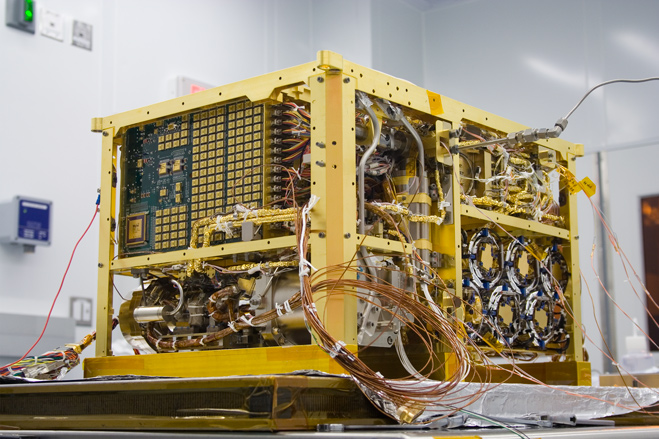SAM

The SAM instrument suite, without side panels, at NASA Goddard Space Flight Center.
The Sample Analysis at Mars (SAM) is a powerful set of three instruments onboard the Mars Science Laboratory (MSL) Curiosity rover that work together to investigate the chemistry of the Martian surface and atmosphere within Gale Crater. SAM's measurements will help scientists better understand environmental conditions over time and assess whether Mars could support and preserve evidence of microbial life, either now or at some time in its past. Though SAM's instruments would fill a laboratory here on Earth, they have been miniaturized to roughly the size of a microwave oven in order to fit inside the Curiosity rover.
SAM's instrument suite consists of a Gas Chromatograph (GC), a Quadrupole Mass Spectrometer (QMS), and a Tunable Laser Spectrometer (TLS), as well as systems that manipulate and process samples. SAM will analyze gases, either drawn directly from the atmosphere or extracted from regolith or powdered rock samples by heating or chemically treating the samples. SAM will search for and characterize organic and inorganic molecules important to life on Earth, as well as information about the chemistry of past and present Martian environments.
SAM was built and tested at NASA Goddard Space Flight Center in Greenbelt, Maryland. Paul Mahaffy is SAM's Principal Investigator.
For more detailed information about SAM, see SAM I Am.
To find out more about how SAM analyzes samples and what information is obtained from each of SAM's instruments, check out the 'Choose Your Martian Sample Adventure' guide.

